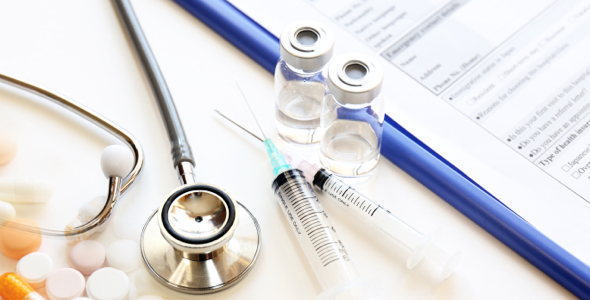By the bioMérieux Connection Editors
With the COVID-19 pandemic having reached more than 170 countries, and cases skyrocketing in the United States and other nations, scientists around the world are working as fast as they can to develop a vaccine for SARS-CoV-2, the virus that causes COVID-19.
As of this writing, there are a large number of vaccine candidates, but only two that are currently in Phase 1 clinical trials—one trial in the US, and one in China. The trial in the United States is being conducted by Kaiser Permanente Washington Health Research Institute in Seattle and completed recruiting on March 19, 2020. The trial in China is being conducted by Tongji Hospital in Wuhan and is currently recruiting.
Clinical trials, which are essential to ensure vaccine safety and efficacy, usually occur in three phases. Phase 1 trials evaluate the vaccine for safety and involve a few dozen healthy volunteers. Phase 2 trials evaluate the vaccine for efficacy within a group of a few hundred people. Phase 3 repeats the trial for efficacy, but with several thousand people. Both phase 2 and 3 trials collect safety data as the number of vaccine recipients increases. For a variety of reasons, including lack of safety and/or efficacy, fewer than 10% of vaccine candidates make it through all three phases. On a normal timeline, new vaccines can take several years or longer to develop and distribute. The seasonal flu vaccine is an exception, because the underlying technology remains the same and annual updates needed are usually limited. SARS-CoV-2 is new pathogen for humans, and the technologies being used to build vaccines for it are also largely new. While the push for speed is entirely understandable, it is extremely important not to cut corners as we evaluate these new vaccine technologies.
Because of the time it takes to perform the clinical trials for safety and efficacy, it will likely take 12 to 18 months before scientists know whether any of the vaccine candidates will work. This 12- to 18-month timeline is likely even years shorter than the typical vaccine development time as much of the basic science work for SARS-Cov-2 has been done on prior novel coronaviruses. This makes parallel development of vaccines for SARS-Cov-2 especially essential, because, “We do not know which vaccines will prove the safest, the most effective, the most durable, and also the most deployable,” according to Dr. Dan Barouch, director of the Center for Virology and Vaccine Research at Beth Israel Deaconess Medical Center in Boston. Even after a vaccine has been proven safe and effective in clinical trials, there is still an enormous amount work required to manufacture vaccines in sufficient quantity and get them to all at-risk patients.
The COVID-19 outbreak is a reminder of the value that vaccines provide us. Without them, many more diseases would regularly ravage communities around the world.
Smallpox and polio, once deadly or debilitating scourges on the human population, have been eradicated through vaccination. Similarly, childhood illnesses that were once common and deadly, including mumps, measles, and rubella, have nearly disappeared in the United States due to widespread vaccination. COVID-19, while more contagious than the seasonal flu, is significantly less contagious than Measles. Recently, measles and other infectious diseases have seen a resurgence as some people have become fearful of vaccines, though fortunately, most children still receive those life-saving vaccinations.
The COVID-19 outbreak has put enormous strain on healthcare systems worldwide, not just in capacity or financially, but on the doctors, nurses, laboratorians, and other healthcare professionals who have put their lives on the line. Besides public health measures like social distancing, the only way to significantly mitigate the enormous human cost of COVID-19 is to develop and deploy a vaccine. Developing treatment for the virus is also critical, but it will not stop the virus from continuing to spread to susceptible populations over time . A successful vaccine for SARS-CoV-2 would reduce the capacity and financial burdens on our healthcare systems, mitigate global economic impacts of the virus, and save thousands of lives.
Opinions expressed in this article are not necessarily those of bioMérieux, Inc.



